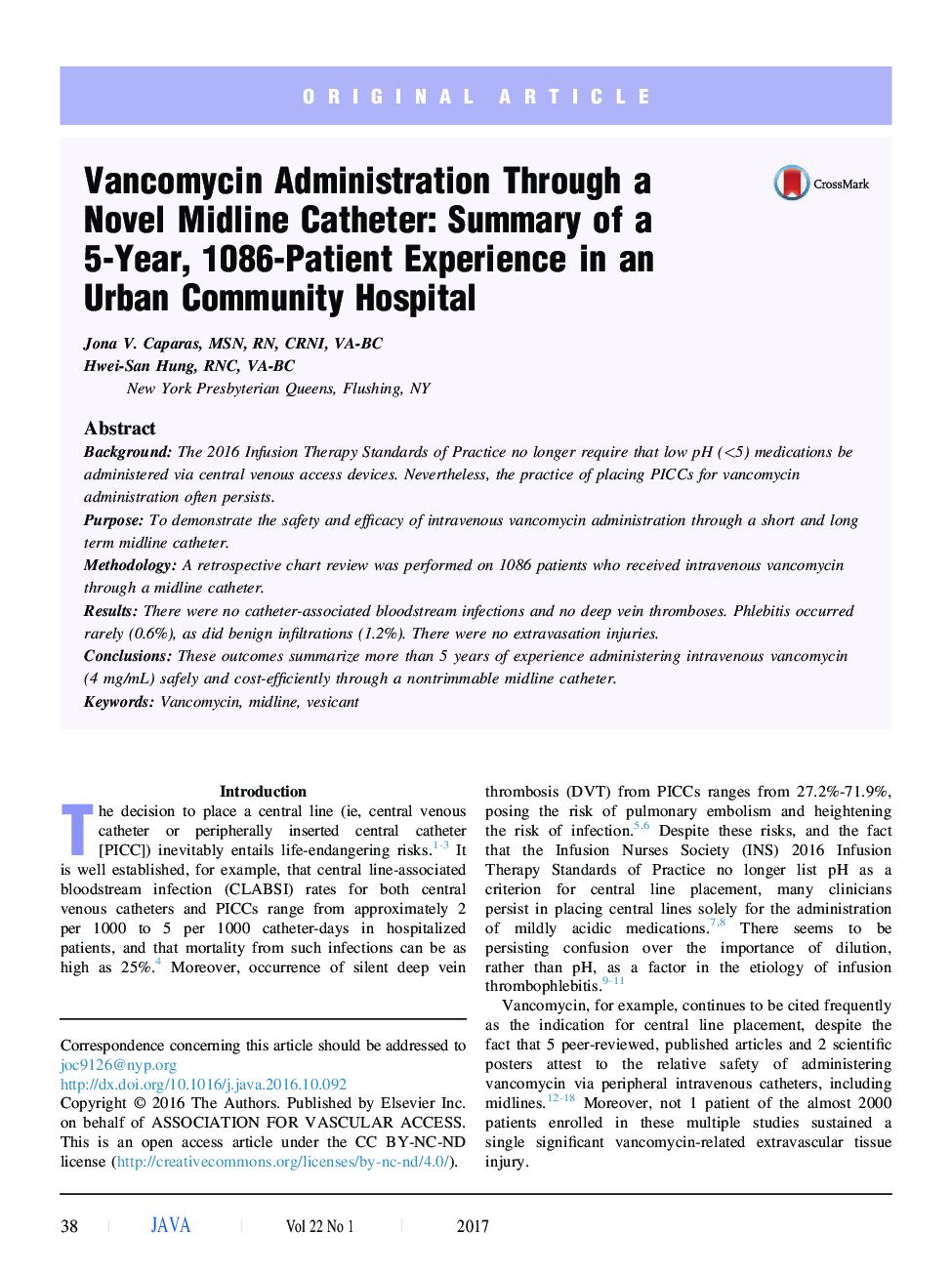| Article ID | Journal | Published Year | Pages | File Type |
|---|---|---|---|---|
| 5569368 | Journal of the Association for Vascular Access | 2017 | 4 Pages |
â¢The 5 year, 1,086 patient NYPQ hospital experience with midline administration of vancomycin attests to its safety and cost-effectiveness.â¢Vancomycin can be administered I.V. with minimal phlebitis (0.6%) when given through an upper arm midline.â¢The new Infusion Standards of Practice eliminated previous pH indications for central venous access: this study affirms those changes with regard to vancomycin administration.â¢Vancomycin via a midline resulted in zero extravasations, zero DVTs and minimal (0.6%) phlebitis.â¢PICCs and CVCs are not required for safe administration if intravenous vancomycin.
BackgroundThe 2016 Infusion Therapy Standards of Practice no longer require that low pH (<5) medications be administered via central venous access devices. Nevertheless, the practice of placing PICCs for vancomycin administration often persists.PurposeTo demonstrate the safety and efficacy of intravenous vancomycin administration through a short and long term midline catheter.MethodologyA retrospective chart review was performed on 1086 patients who received intravenous vancomycin through a midline catheter.ResultsThere were no catheter-associated bloodstream infections and no deep vein thromboses. Phlebitis occurred rarely (0.6%), as did benign infiltrations (1.2%). There were no extravasation injuries.ConclusionsThese outcomes summarize more than 5 years of experience administering intravenous vancomycin (4Â mg/mL) safely and cost-efficiently through a nontrimmable midline catheter.
